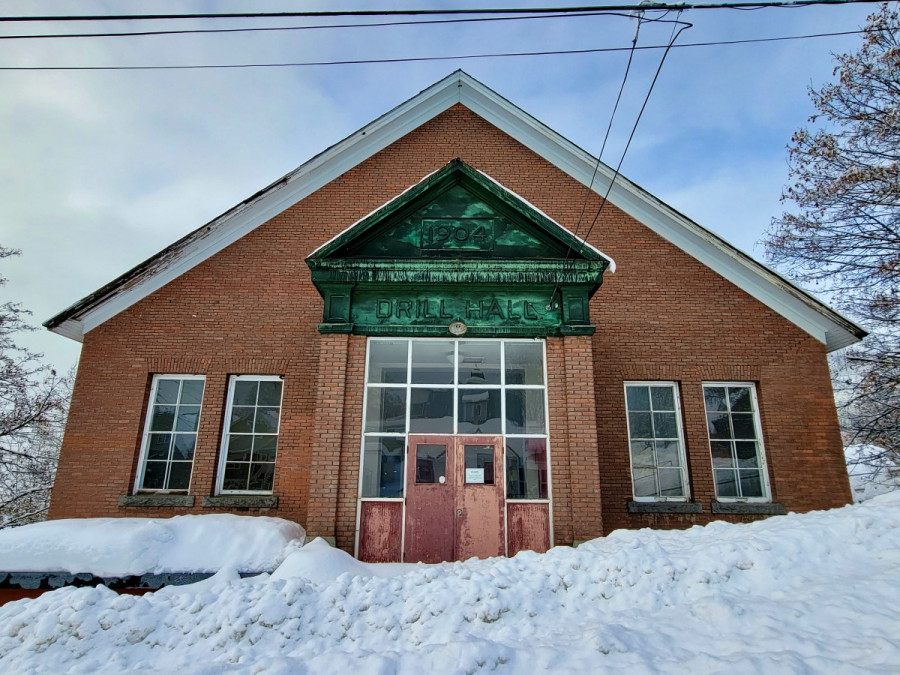Concordia Alumna Advocates for Artistic Innovation
The Quest to Repurpose BC Town’s Historic Drill Hall
Rossland—population 4,100—is a town hidden in the Kootenay Mountains of British Columbia. Despite its stature, Rossland has historically punched above its weight on the world stage.
A hallowed ground for professional skiers, the town has produced three olympic medalists in the sport and has boasted a similar vitality in the field of technological innovation. Inventions such as the flying steamshovel—an early helicopter prototype––and even the walkie talkie trace their origins back to Rossland.
One of the town’s buildings has played an outsized role in the development of this industrious community: the Rossland Drill Hall. Built in 1904 to house local militia, the hall was later used to train garrisons fighting in the world wars. In the intervening decades, it has been used variously as a community hub, school, and sporting centre—and the strain of its long years of service are beginning to show. According to a volunteer coalition of artists, researchers, and community figures known as the Rossland Arts Centre Society, there is still life to be drawn from it.
Lana Jamieson, one of the founders of RACS, explained that the society intends to repurpose the space as a community arts centre. To this end, RACS has entered the National Trust for Canada’s Next Great Save—a vote-based competition that awards $50,000 to the most popular historical restoration project nation-wide.
Originally from northern British Columbia, Jamieson pursued a bachelor of fine arts at Concordia University, from which she graduated in 2010. Jamieson decided to relocate her family out west in 2014 after she and her partner stumbled upon the Kootenay town and fell in love with it. She explained how the idea to repurpose the Drill Hall as an arts centre arrived after she and a friend examined the building up close.
“It had been shuttered for a couple of years by that time. We walked around the back peering in the windows and it looked perfect,” said Jamieson. “Classrooms were complete, the floors looked good. I think we both had an ‘a-ha!’ moment and said what a great space this would be for an arts centre.”
From this initial encounter, Jamieson approached her co-worker and eventual RACS Board Member Sarah Taekema about the burgeoning project. RACS was officially founded shortly after, in 2018, and hundreds of hours of volunteer labour by the organization began to repurpose the building.
Jamieson explained that funds are needed to help restore the Hall’s foundation and roof trusses in a manner that will respect the historical integrity of the building. She said following this, RACS hopes the Hall will become a hub for local artists in every respect––housing galleries, libraries, tool labs, sound studios and other important features.
In her capacity as Research Manager for the Rossland Museum, Taekema learned that anecdotes about the Hall are abundant within the community. In each personal story, the building took on a new guise: a dance hall, a sports facility, a centre for community events and more.
A passionate oil painter, Taekeme explained she wants the Hall to be a space where artists can flourish, develop and generate ideas with each other.
”I am personally looking forward to setting up studios in the Hall. I would love to be able to set up my easel permanently […] in a space where I’m surrounded by artists practicing all disciplines,” Taekema said.
Karina Farr, Co-Chair of the RACS Board, agreed. She said the Hall’s historic architecture serves as a visual reminder of the town’s history and where it can go from there.
“I hope to see drop-in programs for kids and adults where people can just come be creative and exercise their minds anytime they want to,” said Farr. “I’m also looking forward to seeing that beautiful stage in use. I imagine kids drama and dance classes there daily after school.”
For Jamieson, this project would be a huge boost for a town already teeming with artists. She explained that Rossland’s awe-inspiring scenery has lured countless families to the town—many of which are composed of the artistically-inclined.
“[Rossland] has attracted so many creative people and artists who have tried to cram micro-studios into their already tiny houses,” she said.
Jamieson explained that while there are several years of work ahead, regardless of the results, winning the Next Great Save’s $50,000 prize would allow RACS to reopen the Drill Hall’s doors at a hastened rate. As a result, new artistic programming could begin much earlier than anticipated, she said.
For Jamieson and many others at RACS, there is much excitement for this project even though restoration efforts will likely only develop over time.
“I am hopeful that we can complete the structural work and renovation in time for my own children to benefit from it, but I didn't start this project thinking it would be done in one or two years,” said Jamieson. “In my lifetime, I have probably planted one million trees and I won't see any of them grow. This feels a bit like that […] mostly, it will be there for future generations.”
Votes can be cast in the Next Great Save contest here.
This article originally appeared in Volume 43, Issue 10, published January 24, 2023.


_600_832_s.png)


_600_375_90_s_c1.jpg)